Bars Become Cafes
 |
Again, we see that the bar in MOTHER 2 has been changed to a cafe, even in Moonside.
Moonside Monotoly Building
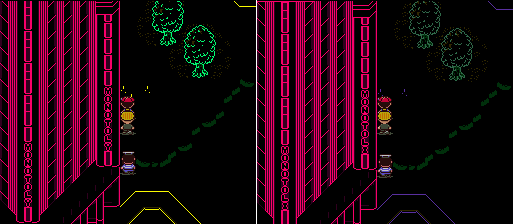 |
And again, we see that the Monotoly Building has been changed to the Monotoli Building.
Moonside Speech Patterns
 |
As you can see here, Moonside people talk crazy and rearrange their words in both versions of the game.
I always thought it was funny and cool when I played EarthBound, but I think this bizzareness effect works better in Japanese because of the language’s use of a syllabary rather than a normal alpahabet.
Mistaken Identity
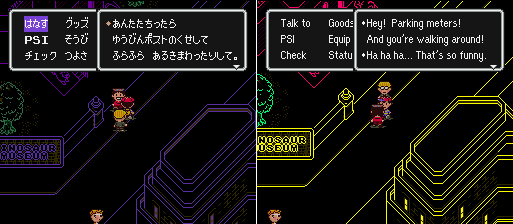 |
In EarthBound, this character in Moonside says, “Hey! Parking meters! And you’re walking around! Ha ha ha… That’s so funny.”
In MOTHER 2, the person says something along the lines of, “Oh, look! You’re mailboxes, and you’re wandering around everywhere! You’re so funny!” So, in Japanese, you’re actually mistaken for mailboxes instead.
Magic Fortuneteller
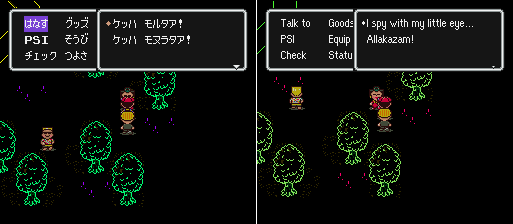 |
In EarthBound, this fortunteller lady says, “I spy with my little eye… Allakazam!” After that, she foretells that you’ll take a silver ball to a summer country and that you’ll be burnt but you’ll be fine.
In MOTHER 2, for the allakazam part, she says the phraze “Kehha Morutaa! Kehha Monurataa!” At first I had noooo idea what this was, but apparently it’s also a weird magic phrase that’s basically a backwards version of “Atarumo hakke Ataranumo hakke”, a Japanese proverb that basically means “the future is unclear, fortunetelling will be right sometimes but will usually be wrong”.
Sailor Guy
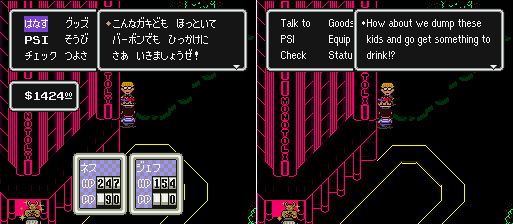 |
I should mention real quick that there’s the tiniest nuance in this MOTHER 2 sailor’s first line that he’s not looking for a specific guy with connected eyebrows and a gold tooth; it’s more like that such people are his type. His English line kind of hints at this, but the fact he’s looking for one in general and not a specific one isn’t quite as clear by the use of the word “a”.
Anyway, that’s not very important. What’re more interesting is that once you bring a guy with connected eyebrows and a gold tooth to him, in MOTHER 2, the sailor will say, “…Let’s ditch these brats and go drink us some bourbon or something! Come on, let’s go!”
In EarthBound, they got rid of the specific bourbon reference and just used the generic phrase of “get something to drink”.
Forgetful Man
 |
Just a very slight mistranslation here. In MOTHER 2, this guy says, “I’m a very forgetful man. I’ve forgotten why I’m here. …Wait, what did I just forget? ………What kind of man was I again? Am I a man?”
In EarthBound, what he says differs ever so slightly: “I’m pretty forgetful. I even forgot why I’m here. Hmm… I just forgot something… Who am I? Am I a man?”
Probably the main issue here is that he keeps saying he’s a man and then at the final line, he forgets that. You see his forgetting in action. In the English version, you don’t see that progression.
Mani Mani Statue’s Name
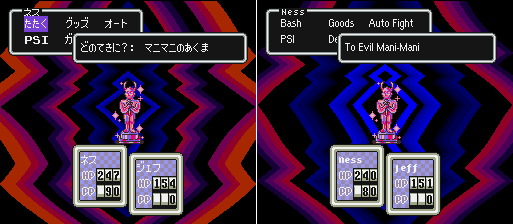 |
Again, the Mani Mani Devil has its name altered to something else in EarthBound. In this case, it’s called the “Evil Mani-Mani”. The EarthBound localizers always write around the “devil” part of this thing’s name throughout the game.
- A detailed look at the unique speaking style found in MOTHER 2’s Moonside, how this was handled in EarthBound, and some of the pluses and minuses that both styles feature
- A fundamental part of the Japanese language that’s very different from English, how this posed potential problems for EarthBound’s translators, and how this difference HAS been problematic in other popular localizations
- Some technical details on the sign changes in Moonside
- Some more details on the Japanese “allakazam” line, including another example of it in another Nintendo game
- A quick look at the invisible man’s character and speaking style in MOTHER 2
- Examples of the inconsistent removal of “demon” and “devil” during EarthBound’s localization process


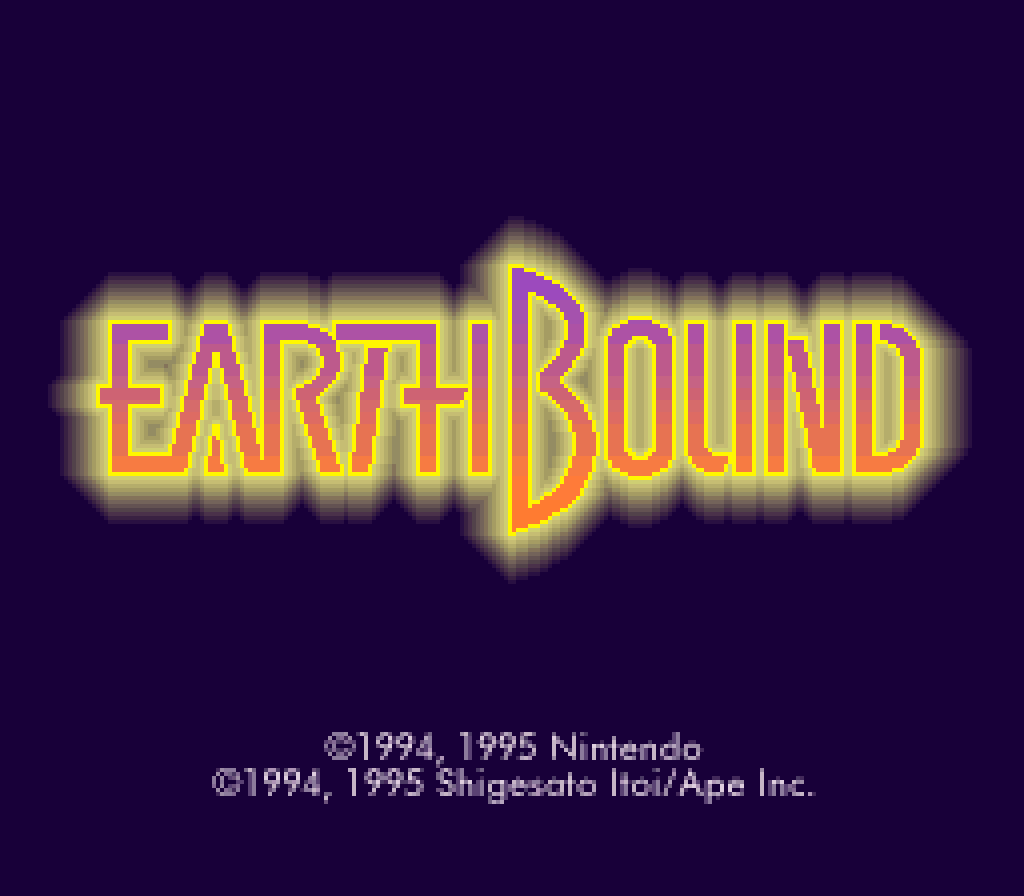
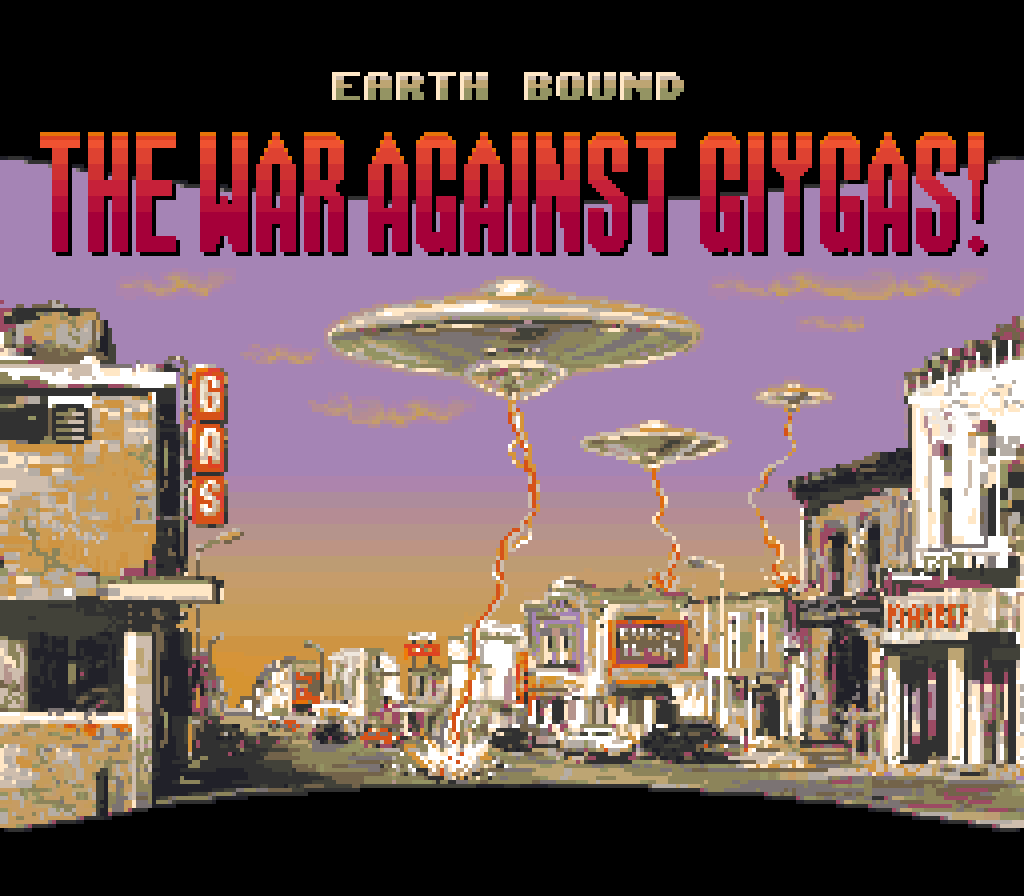


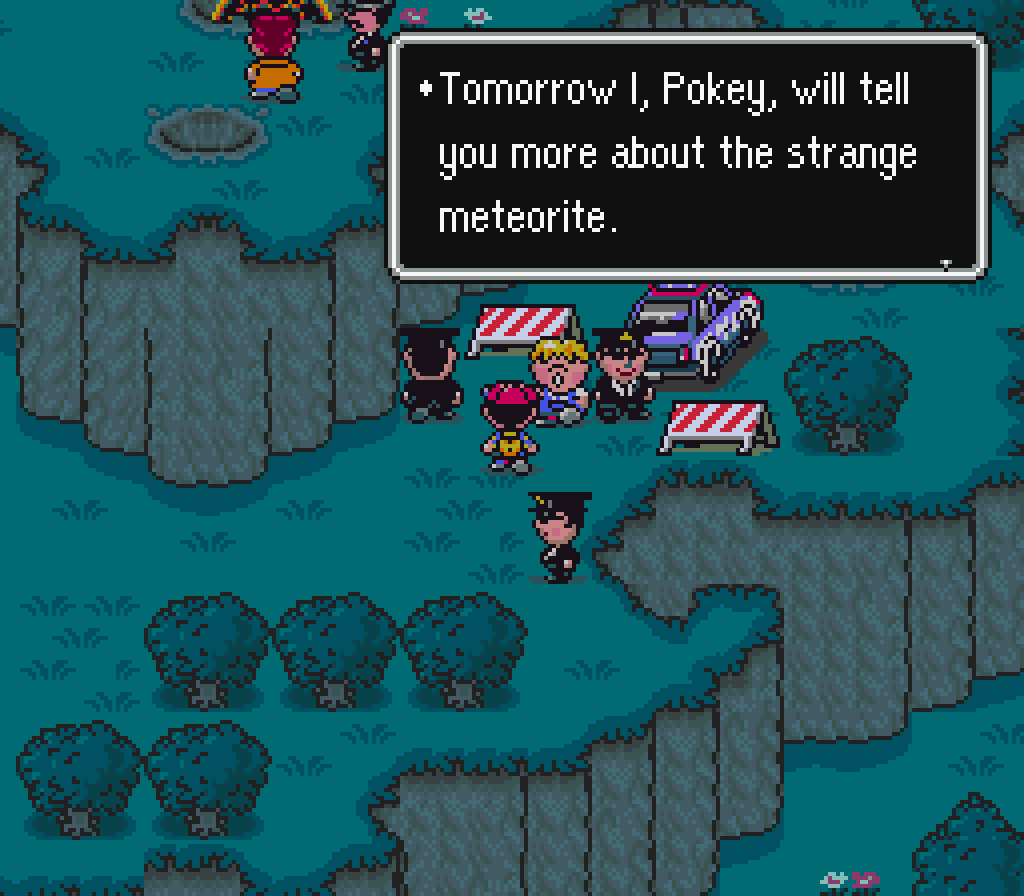
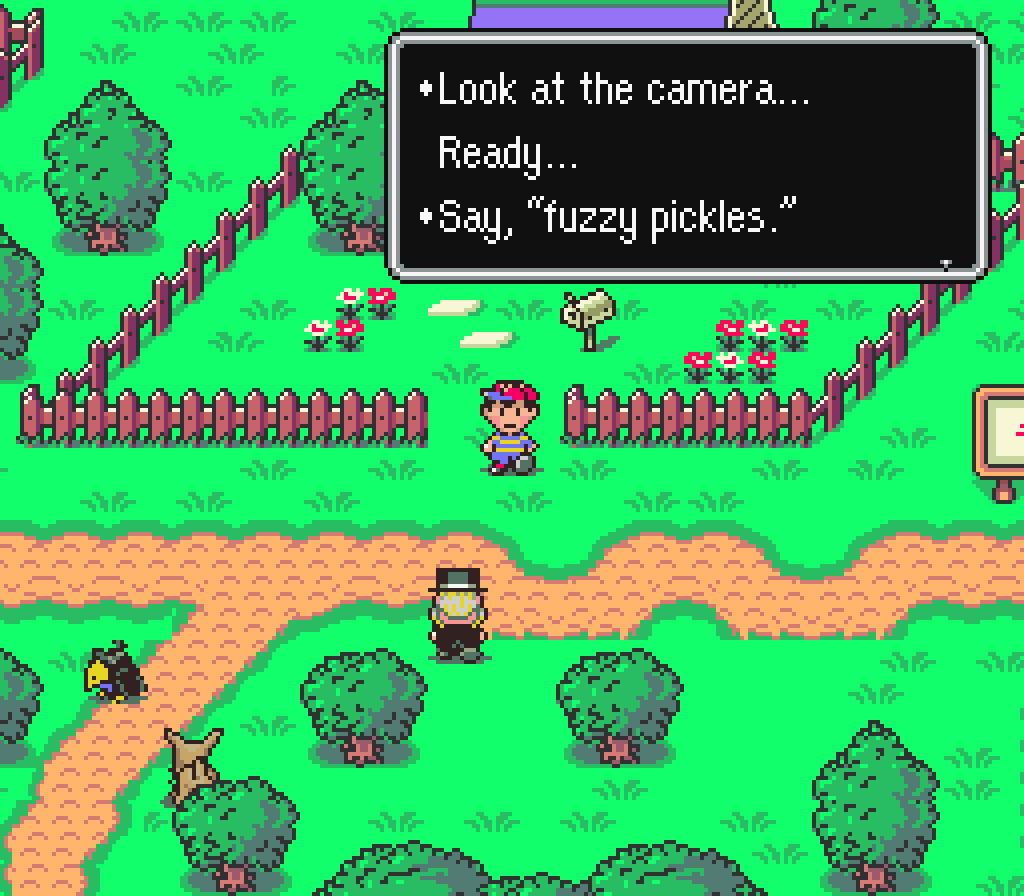
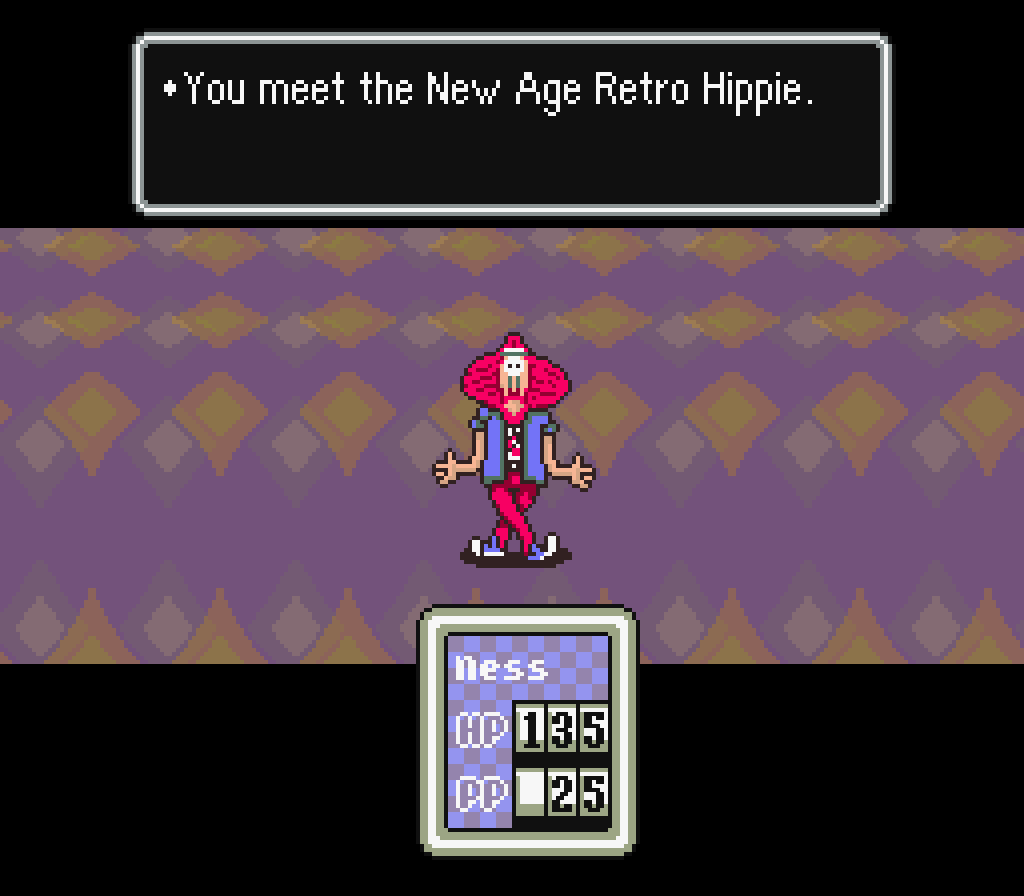
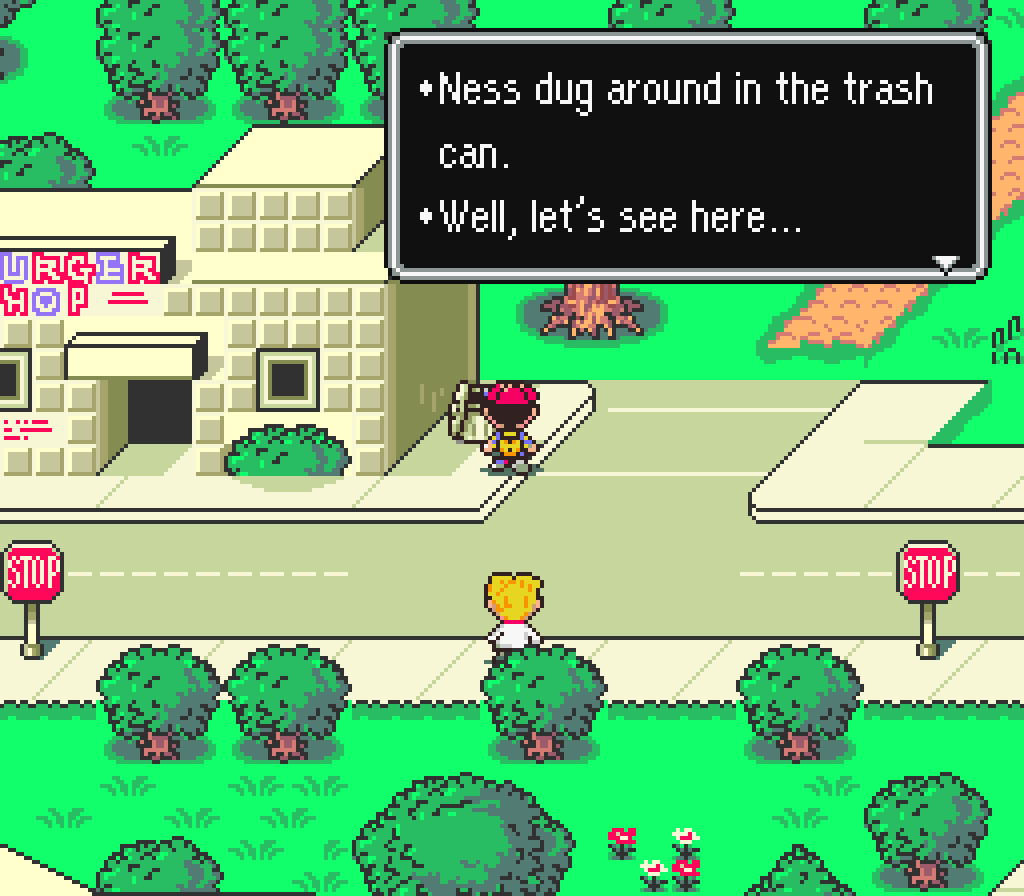
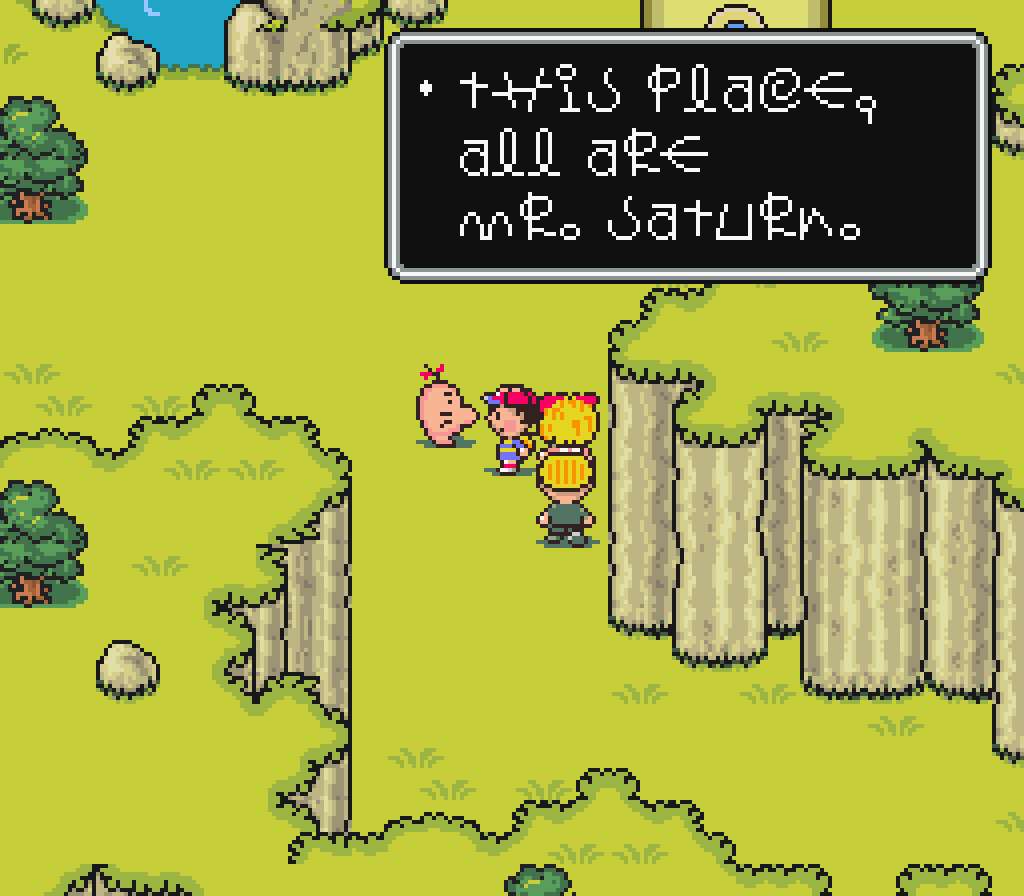

![Passport to MOTHER 2 [Learn Japanese!] Passport to MOTHER 2 [Learn Japanese!]](https://legendsoflocalization.com/wp-content/uploads/2018/05/pp-m2.jpg)
No Comments